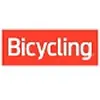When the 7-Eleven team first raced the Tour de France, in 1986, we were like kids going to a gunfight armed with sticks. Every day was a learning experience on the fly. I'll never forget how one of Tour winner Bernard Hinault's lieutenants, Jean Francois Bernard, rode up beside me after a technical descent—on which I had passed nearly everyone in a bid to get to the front before the next climb. He told me to calm down and not endanger the other riders by descending too fast. It turned out that the racers' code was to not risk lives. But you don't need to ride in the Tour to learn from the pros. Here are a few things to look for as you watch the race.
PACING
It may not be immediately noticeable on TV, but each racer carefully monitors the amount of effort he's putting out. It's as if the rider starts each day with a fresh book of matches. Each effort, be it an acceleration, a climb or time spent in the wind, uses a match. When the book is empty, there's no way to find more. It might help to divide your ride into thirds. The first third should feel easy. In the middle third you can push, but be sure to leave a few matches to burn during the final third.
GROUP RIDING
A rider who isn't drafting uses up to 30 percent more energy to maintain the same pace. In the Tour, you'll see riders from different teams taking turns at the front of the paceline to break away from the field or chase a break. If you're not confident in your paceline skills, stay at the back, letting the group rotate in front of you.
More: 8 Cycling Hand Signals for Your Next Group Ride
TACTICS
The course profile dictates teams' strategies: On flatter stages, the leading team will try to keep the group at an above-average pace to discourage breakaway attempts. Hillier courses will force the leading team to be cautious for the first half of the day. Team members will aim to deliver their leader to the bottom of the last climb with fresh legs so he can rocket up. Similarly, you should assess your event with an understanding of your strengths. If you have lots of muscle mass you'll most likely be stronger on the flats, where you can push bigger gears. On climbs, larger riders should stay seated and spin smaller gears, while slighter riders can stand and push bigger gears.
NUTRITION
It's hard to see because the TV cameras jump around, but Tour riders are constantly taking in calories. Every five to 10 minutes they drink a liquid complex carbohydrate, and every 15 to 20 minutes they eat part of an energy bar. Forgetfulness has its consequences, as we saw in this year's Paris-Nice stage race, where Alberto Contador lost the overall lead on the penultimate day because he didn't eat and drink enough early in the stage.
More: 8 Single-Leg Exercises to Increase Cycling Power
 Ready to ride? Search for a cycling event.
Ready to ride? Search for a cycling event.



